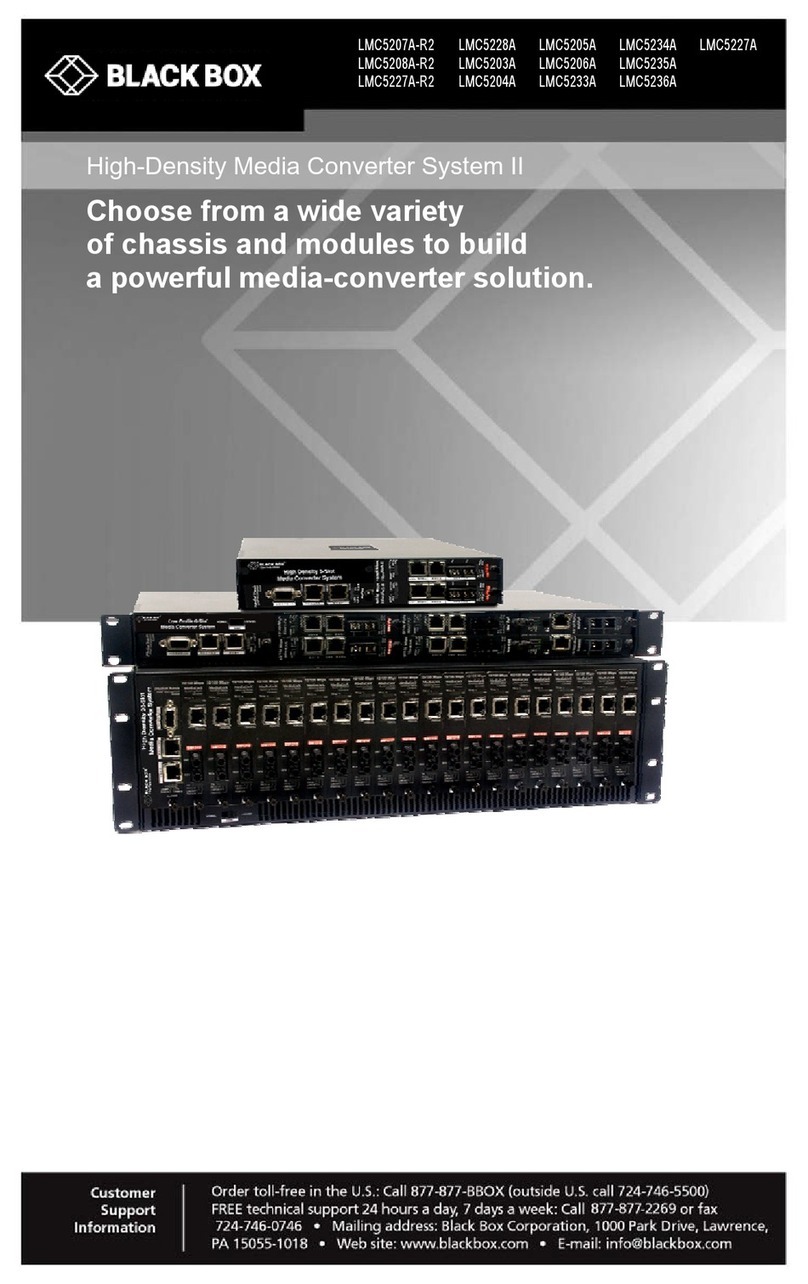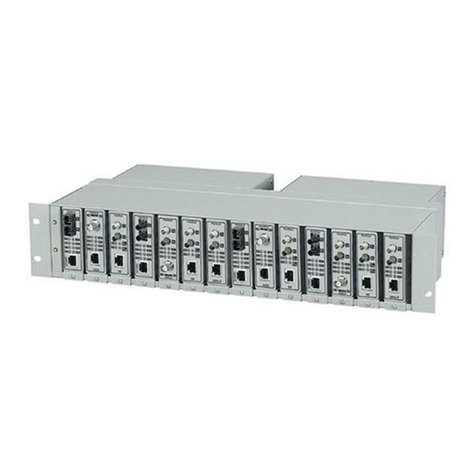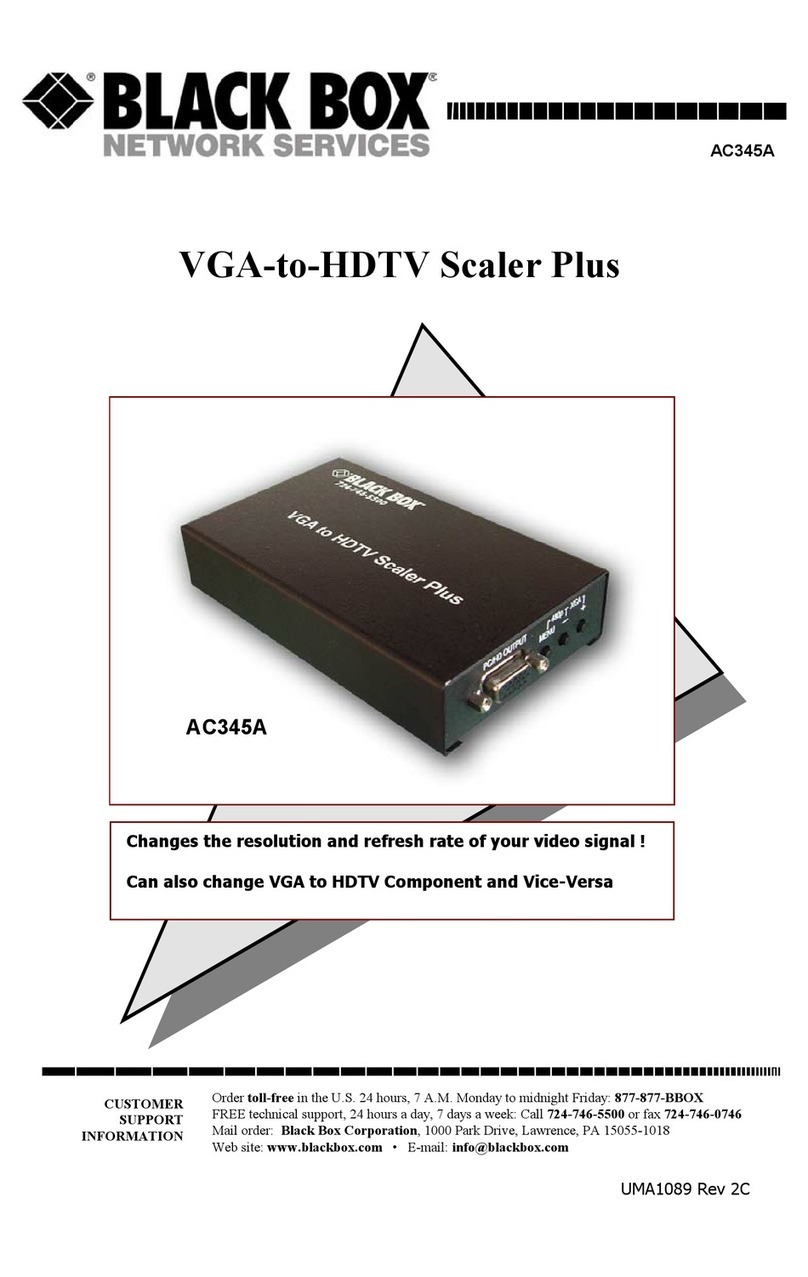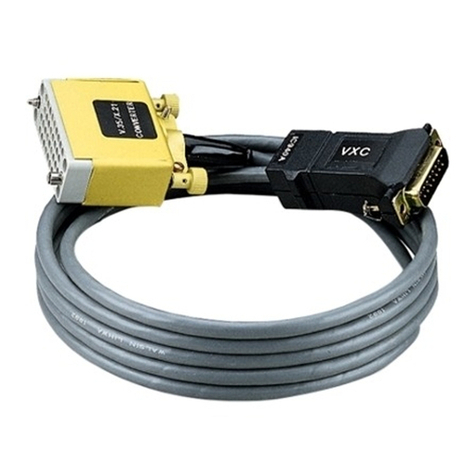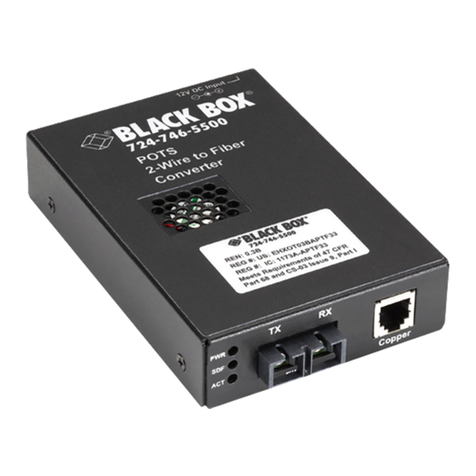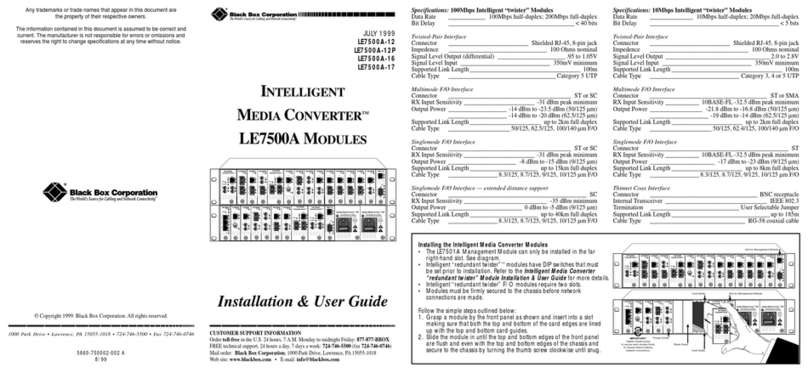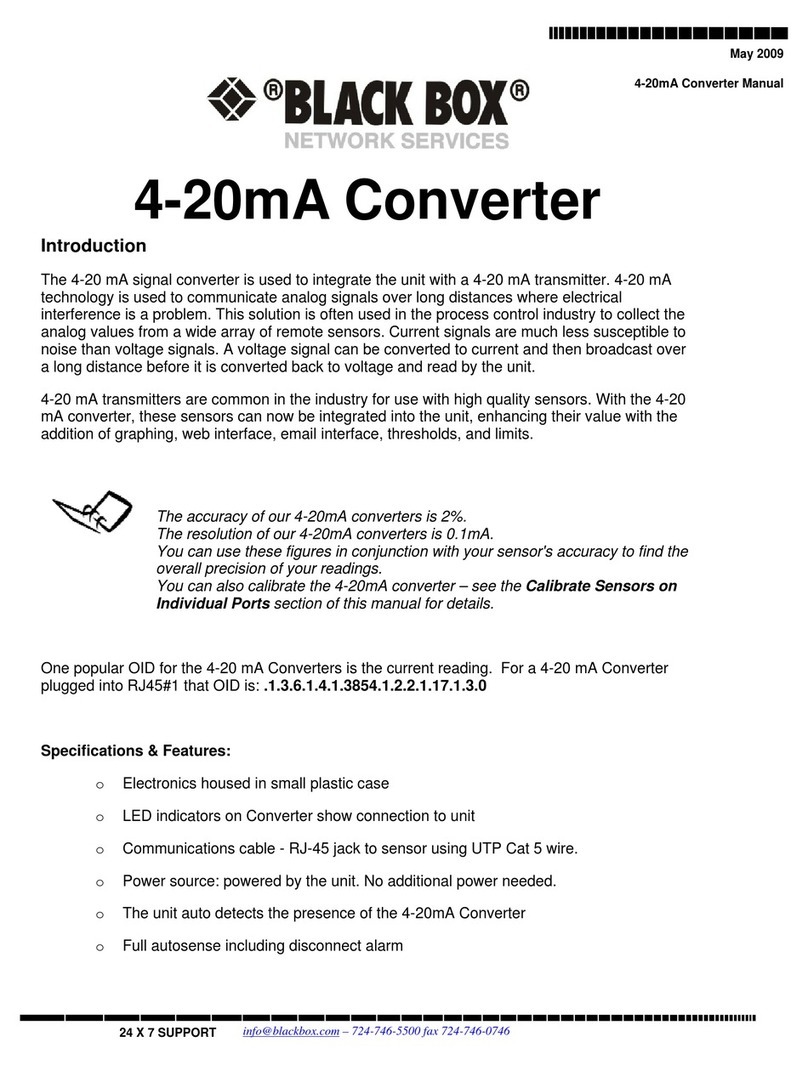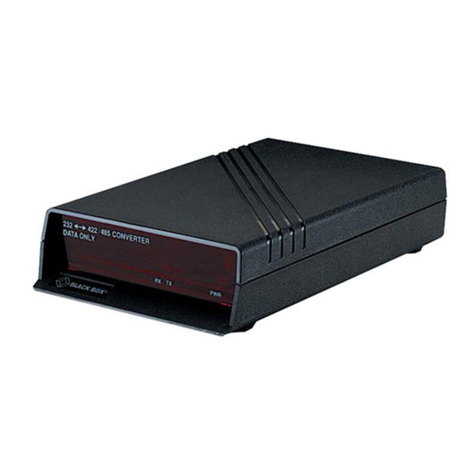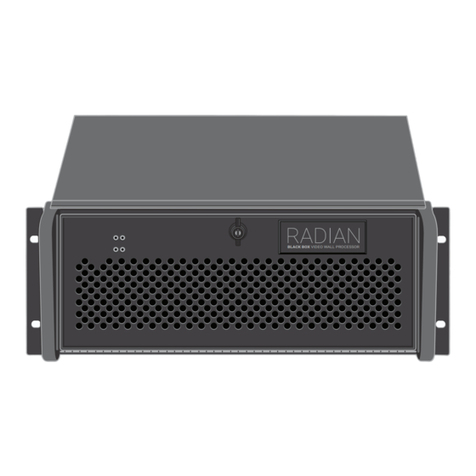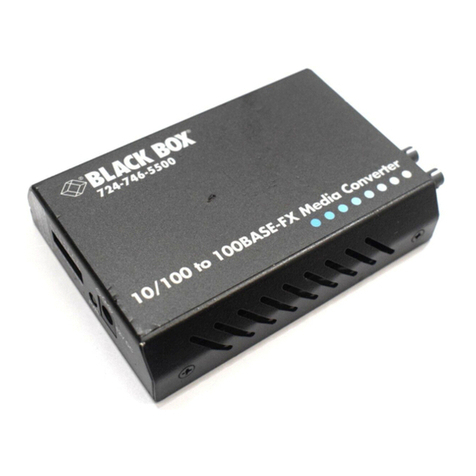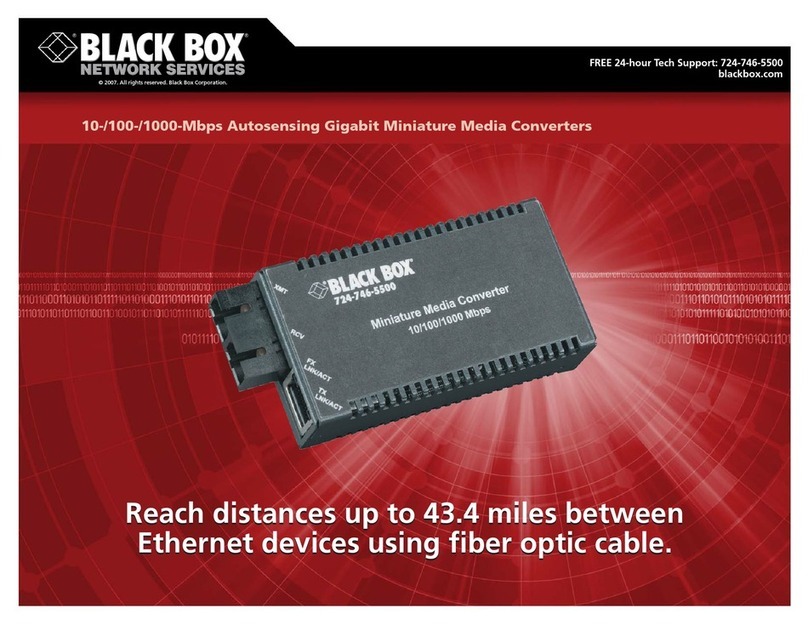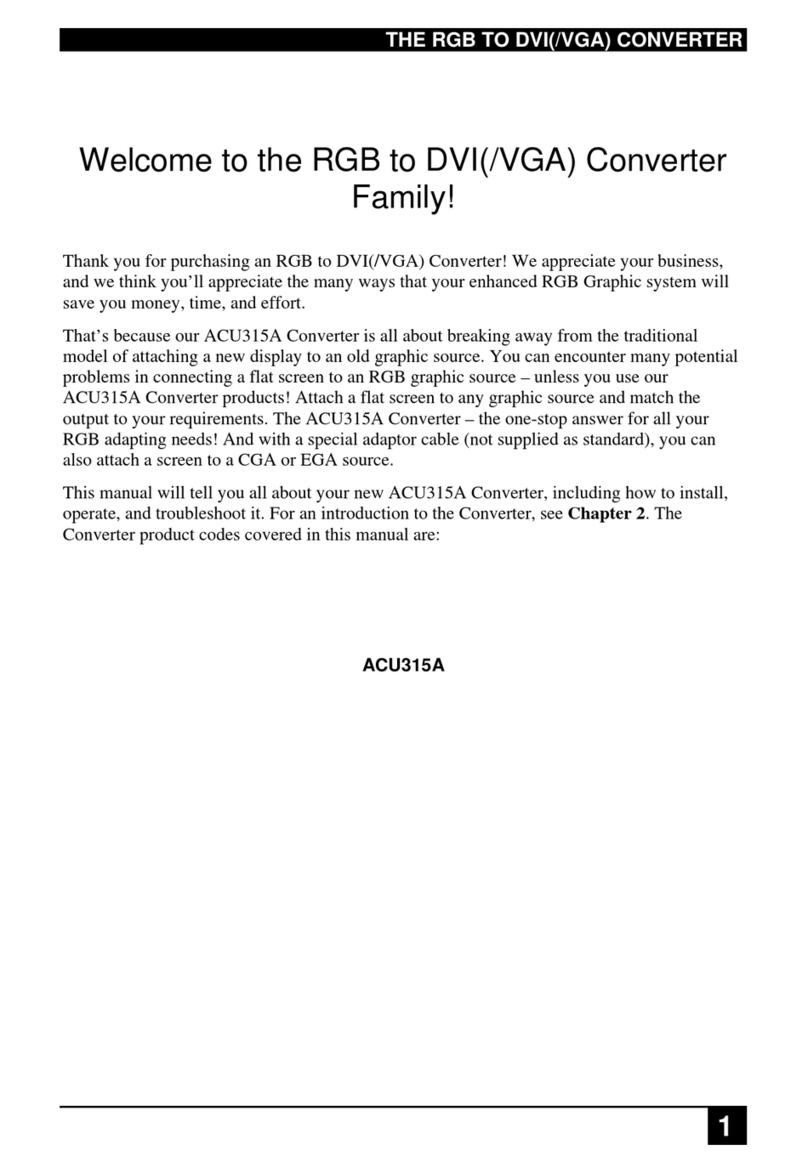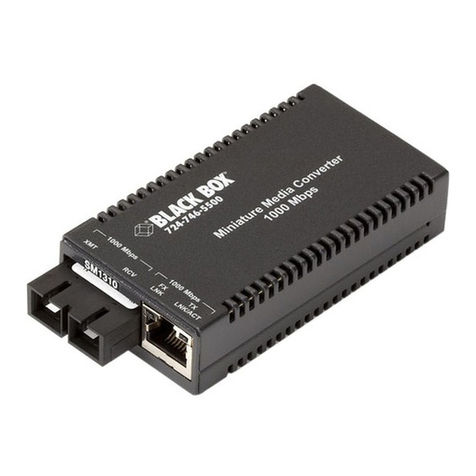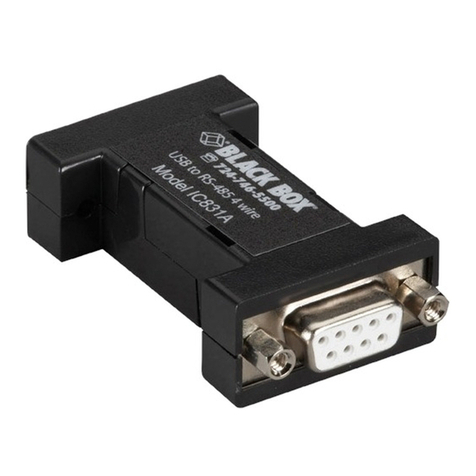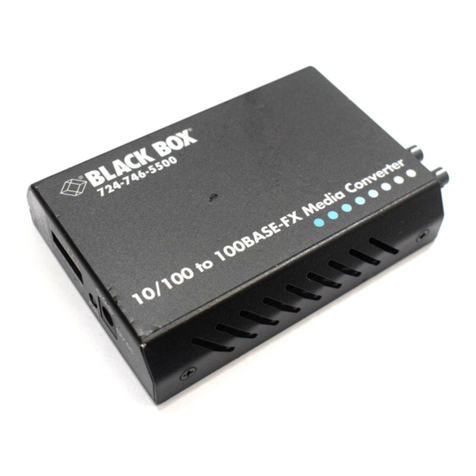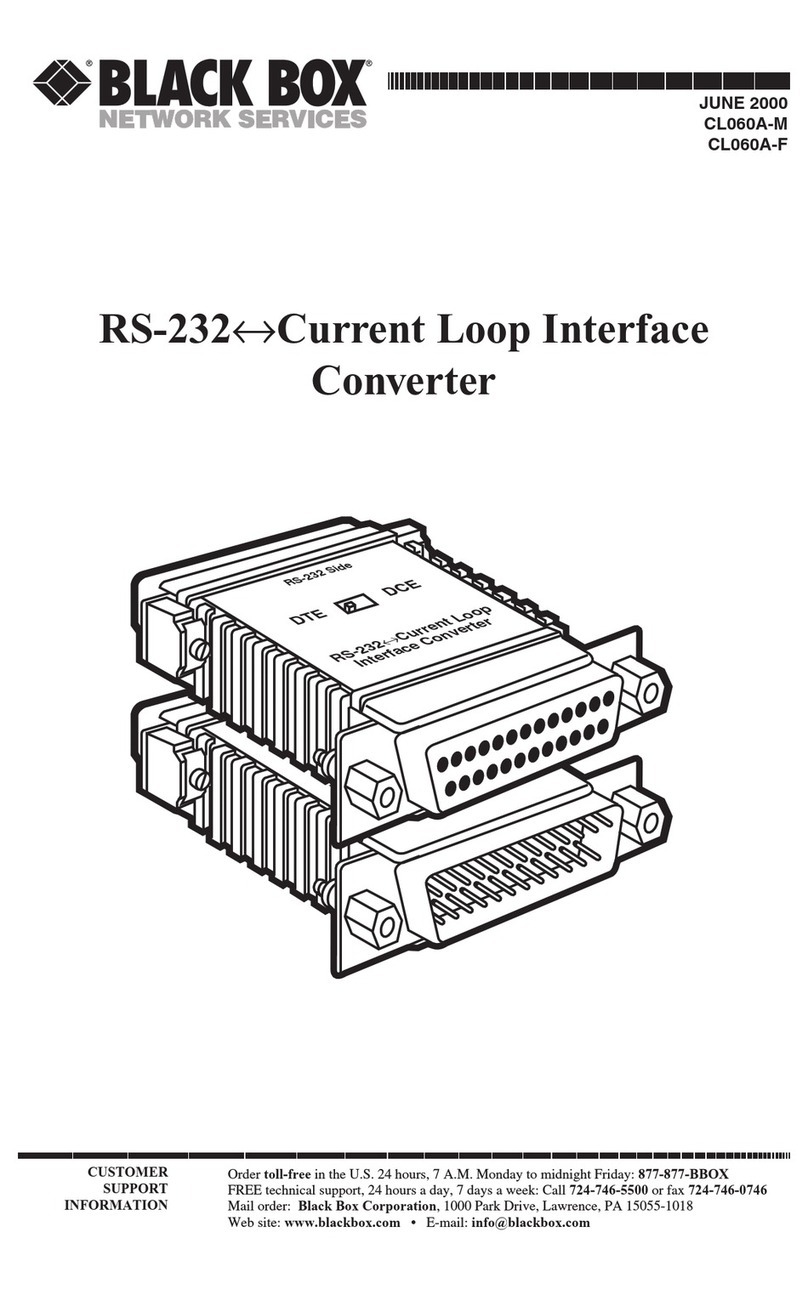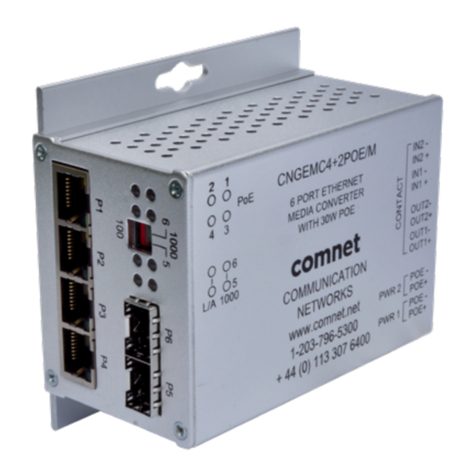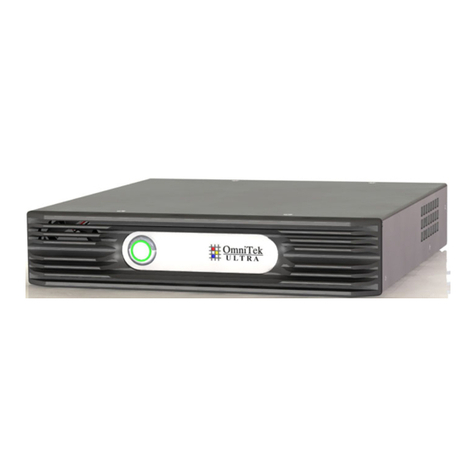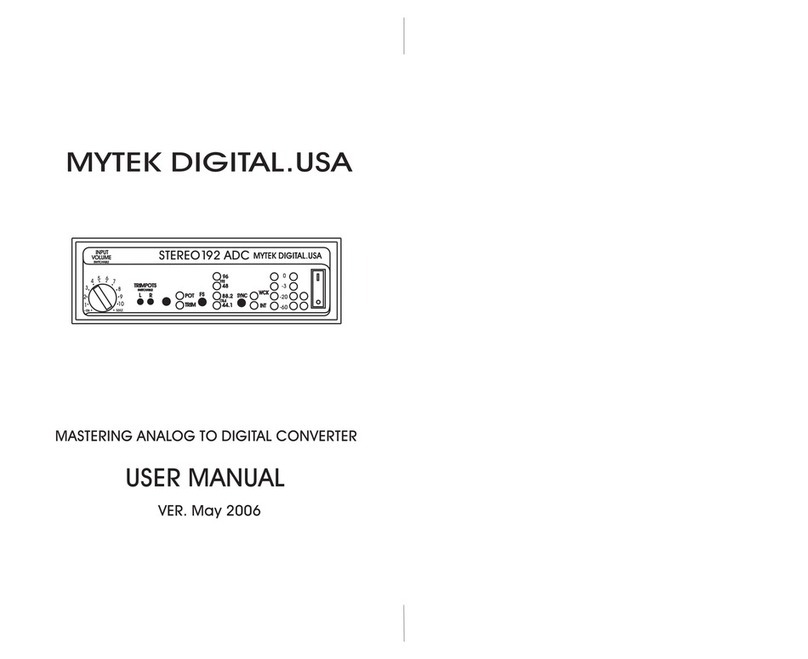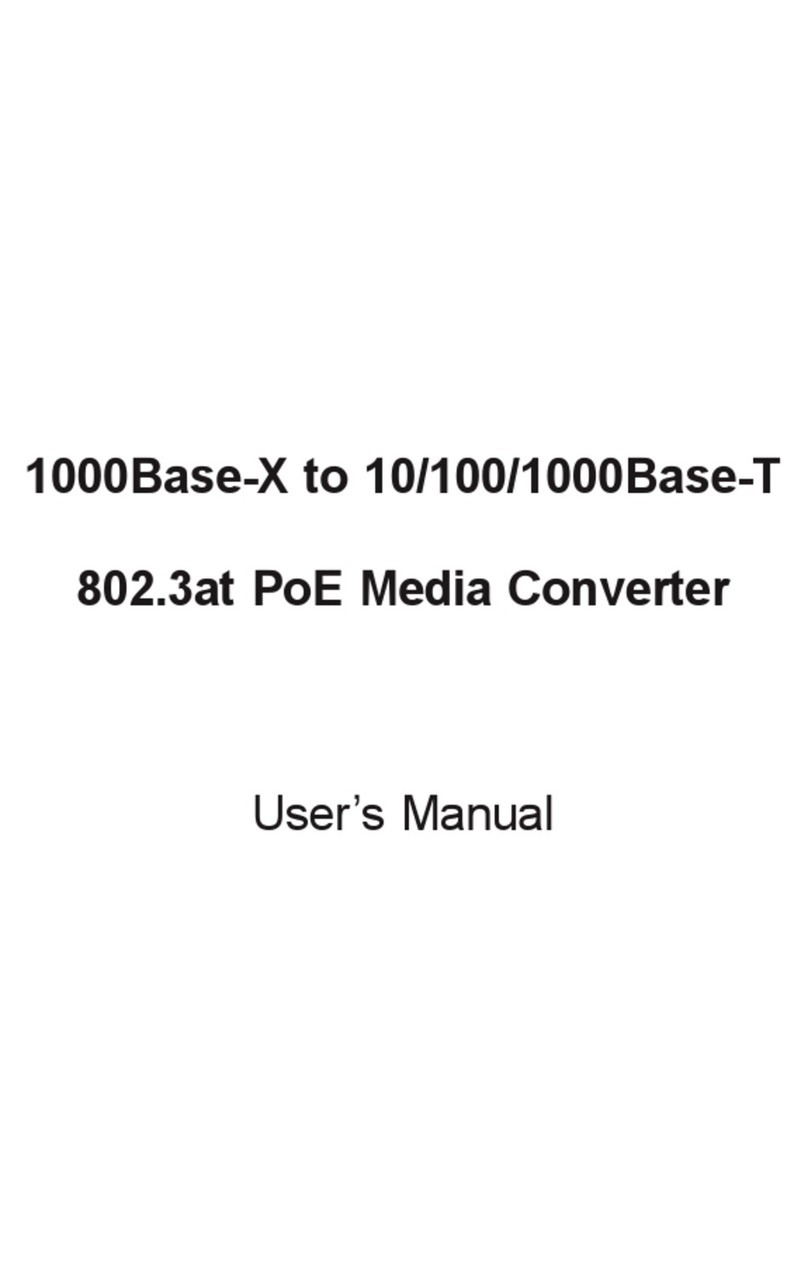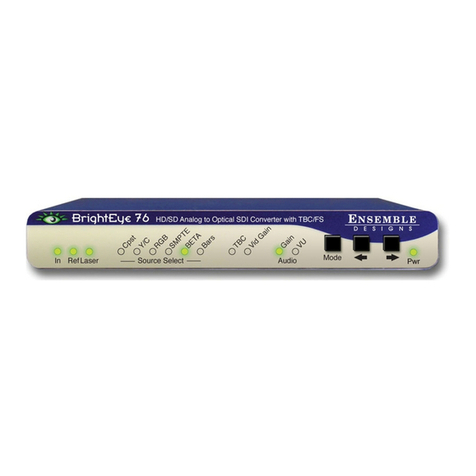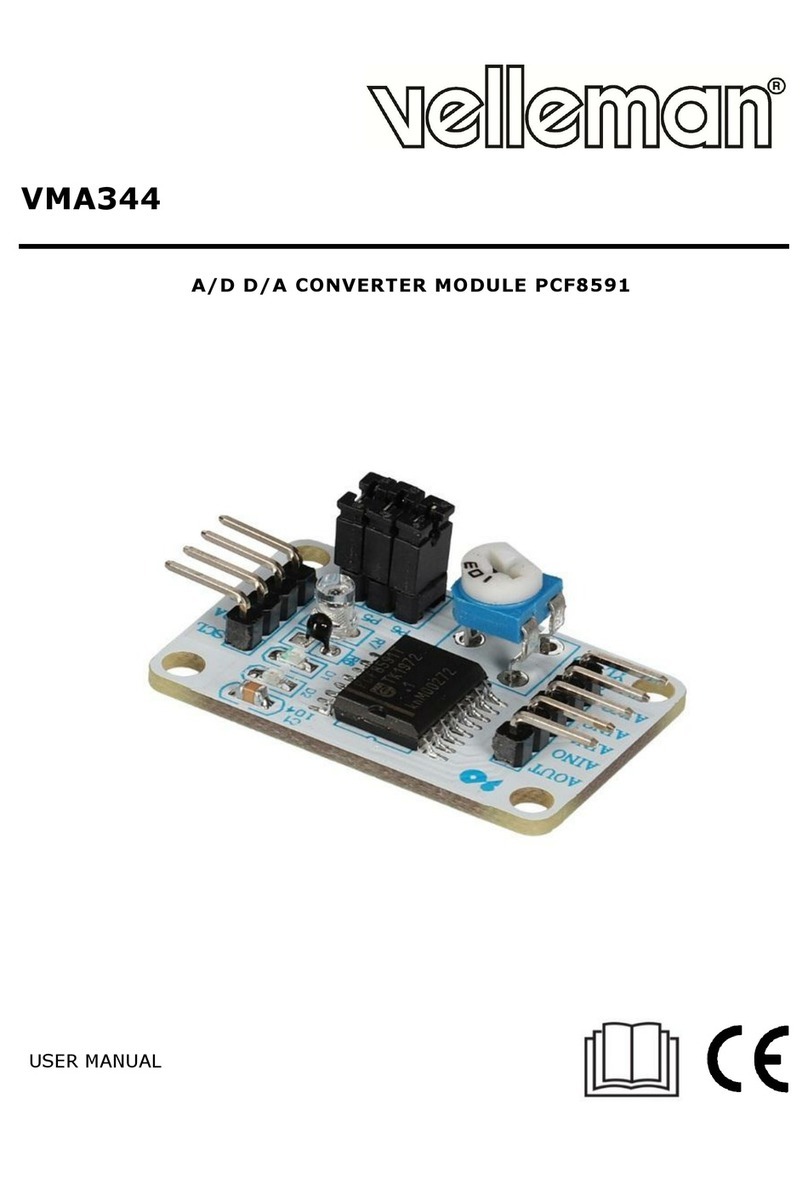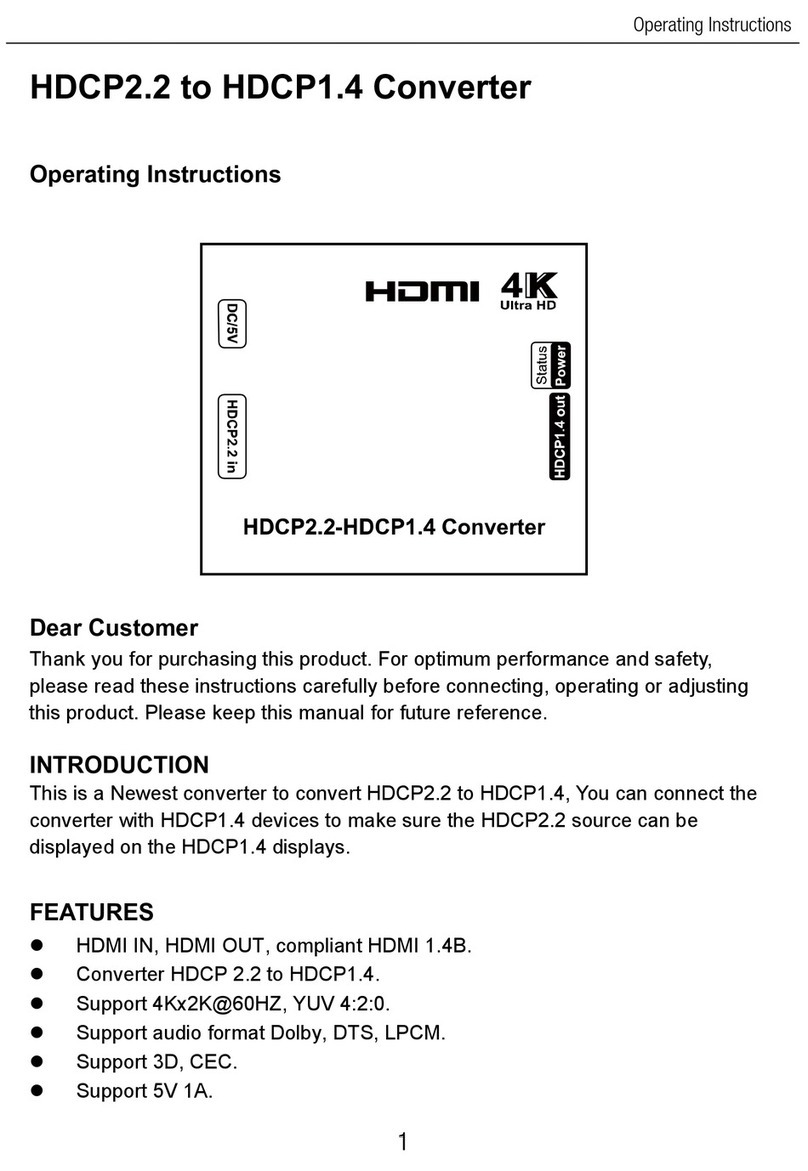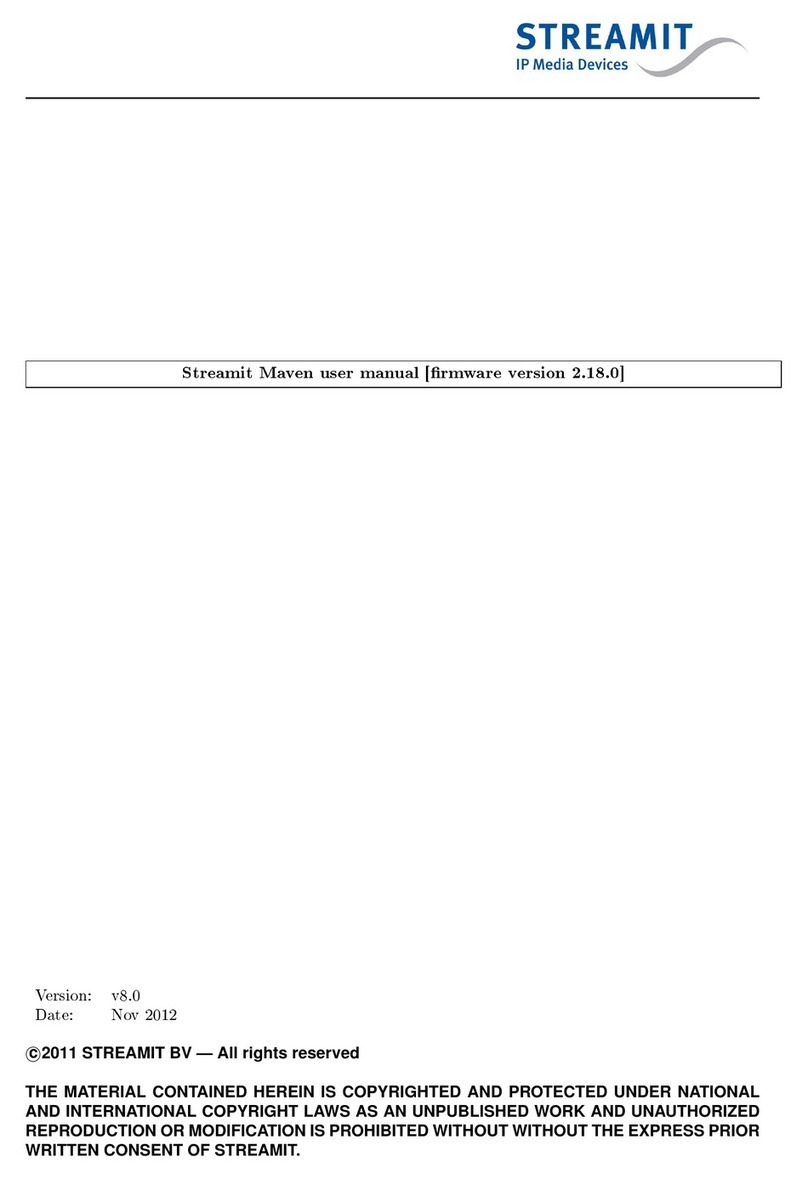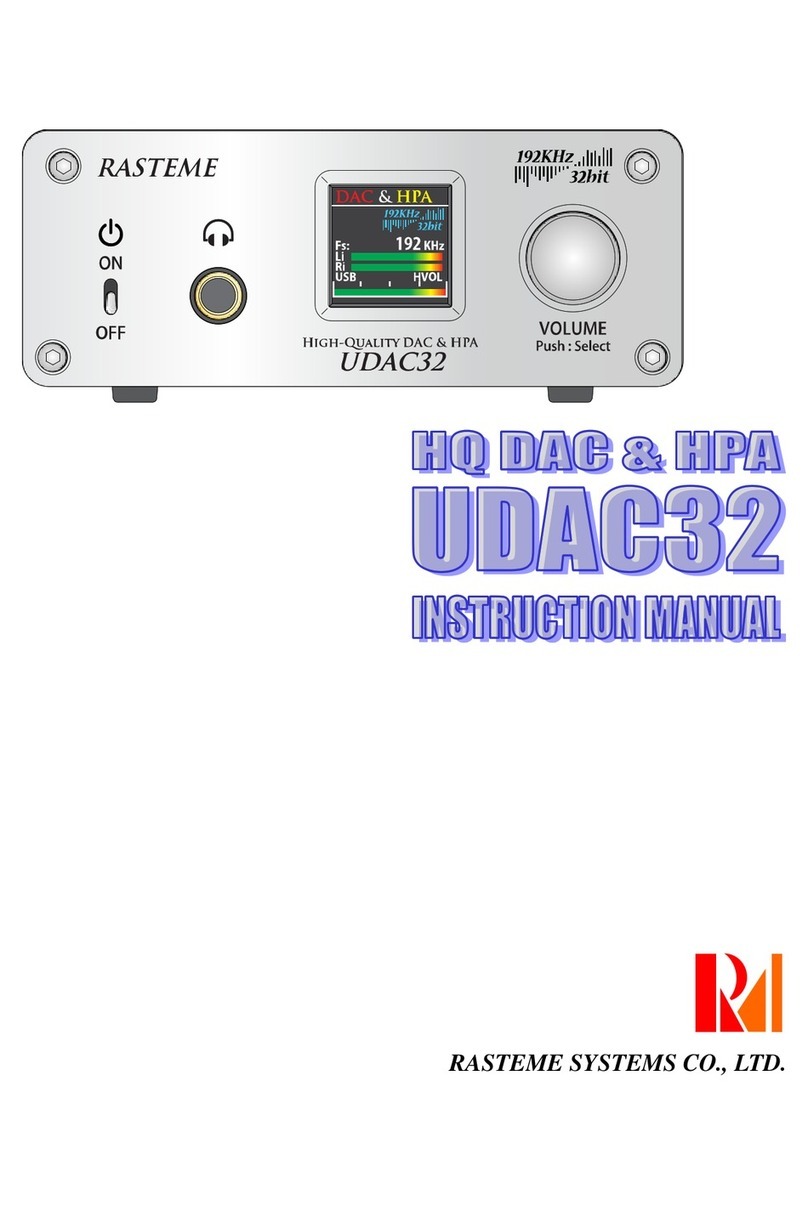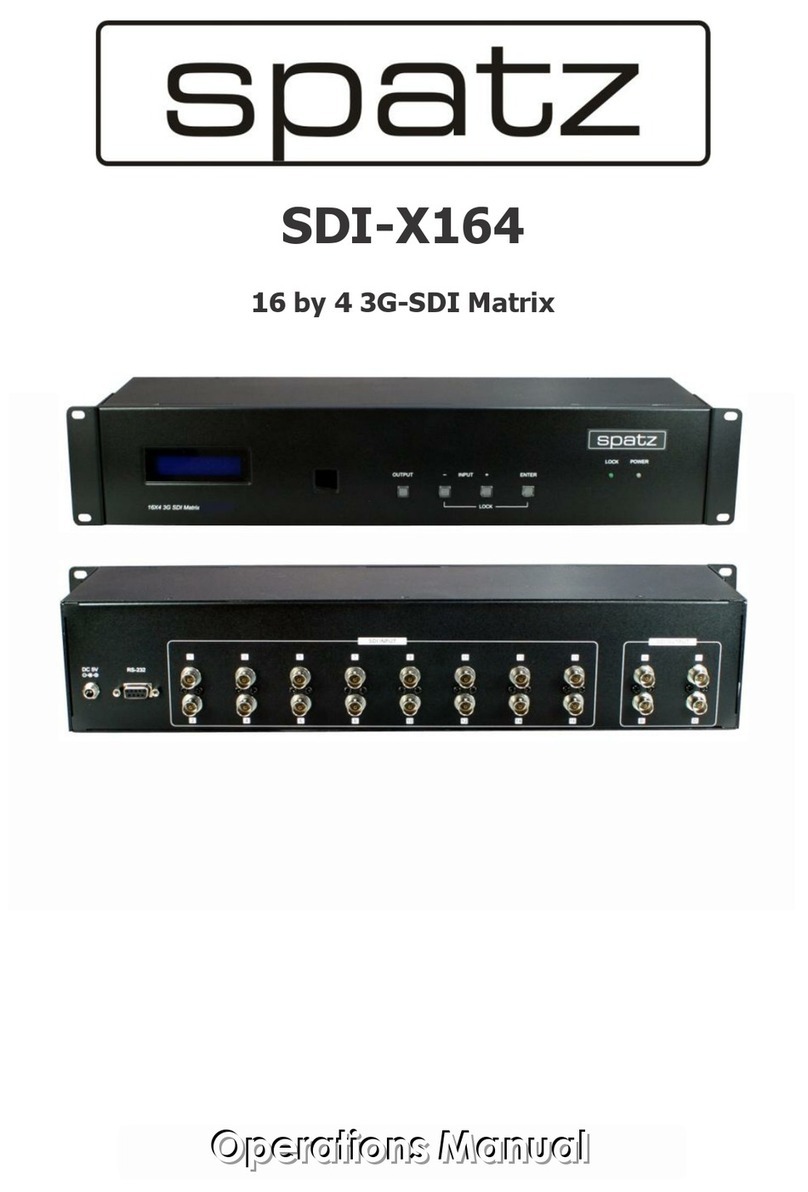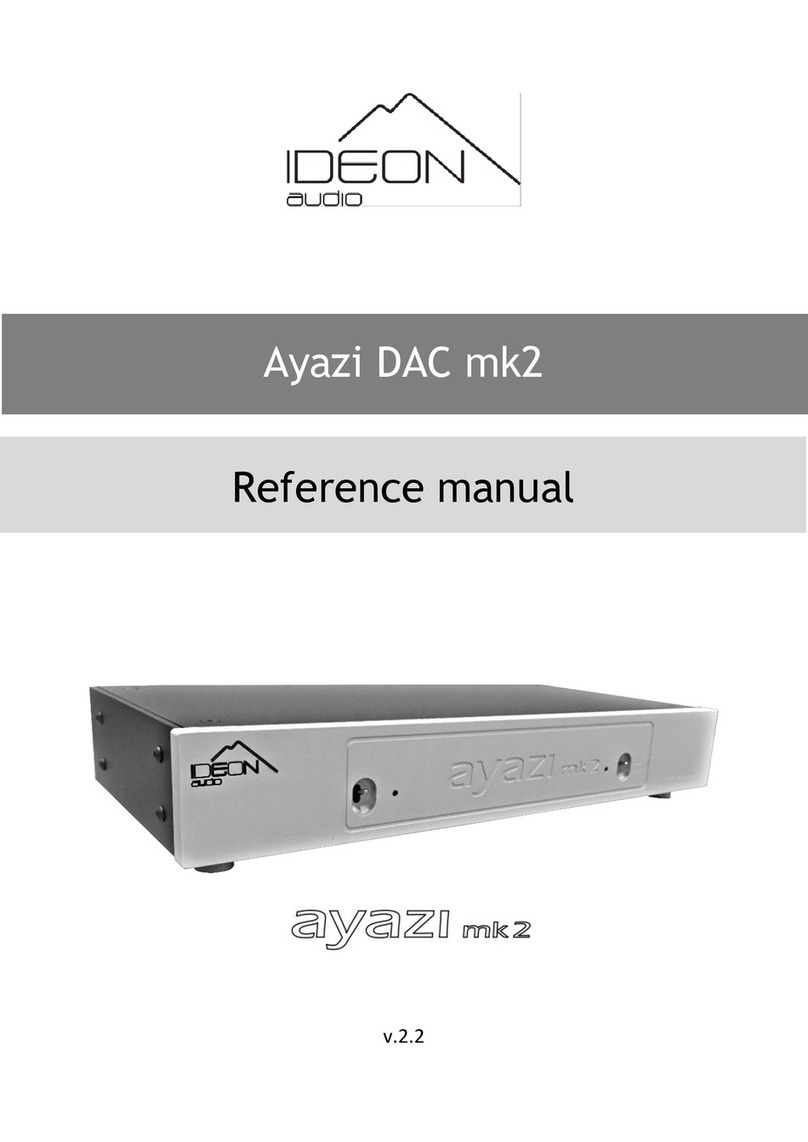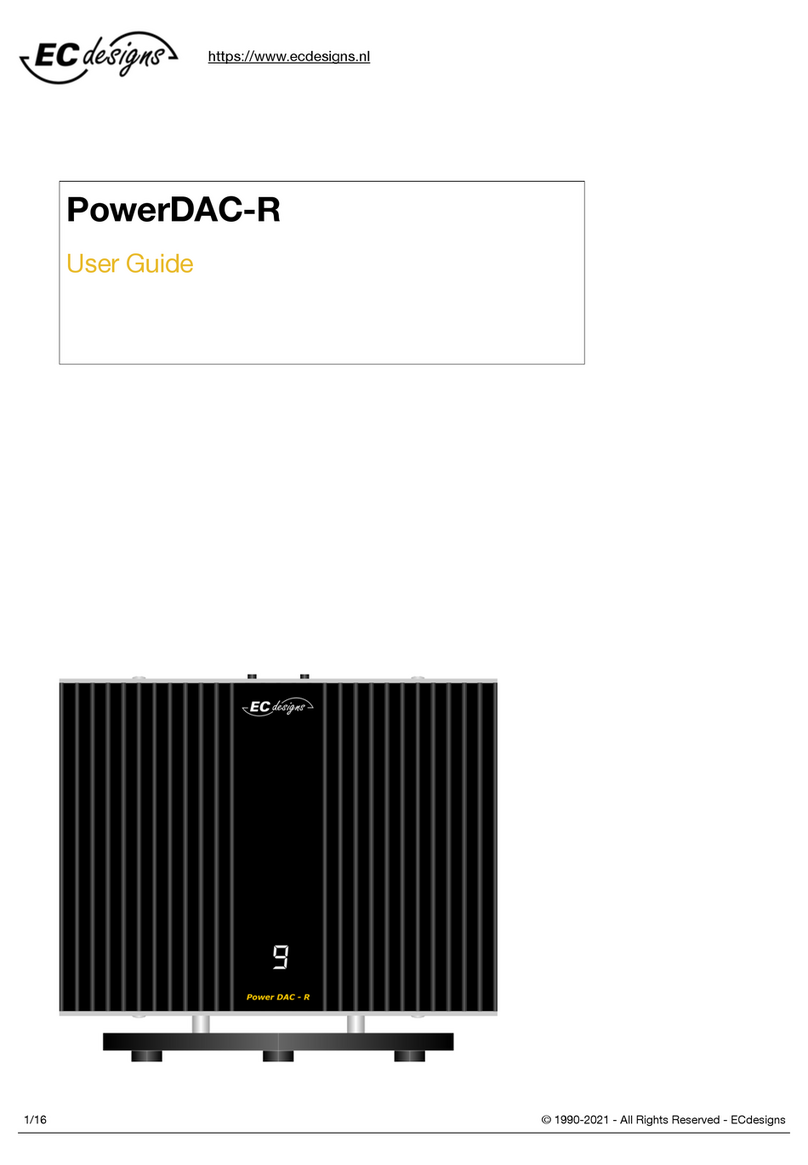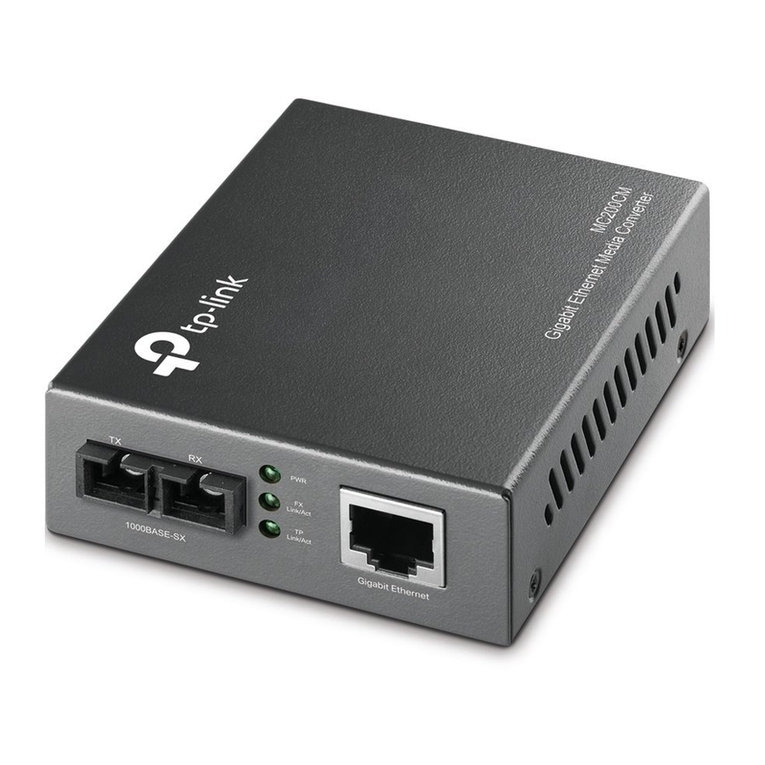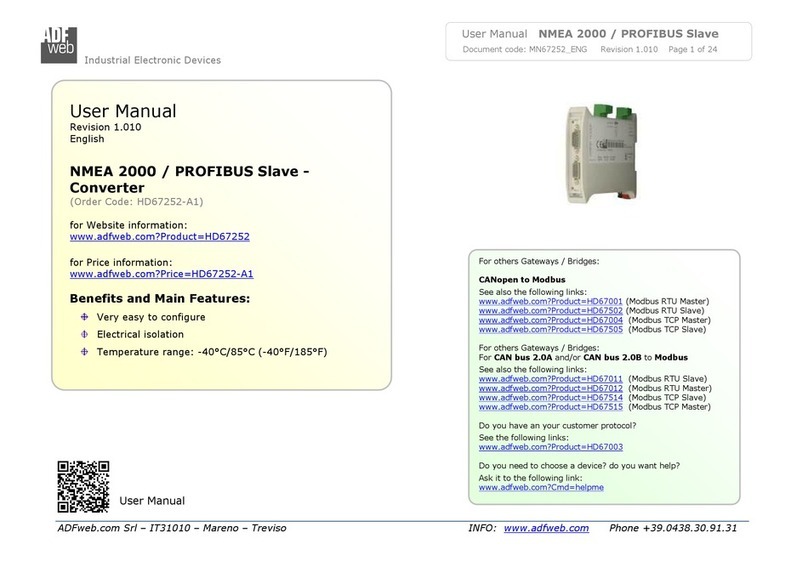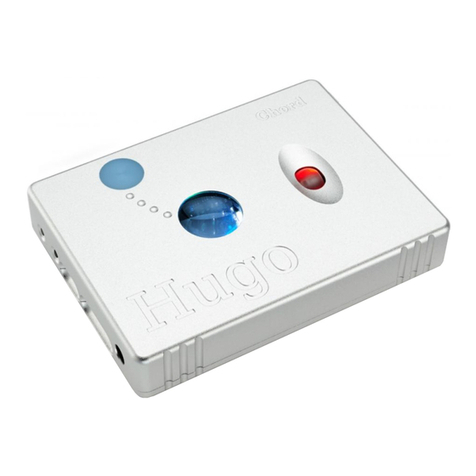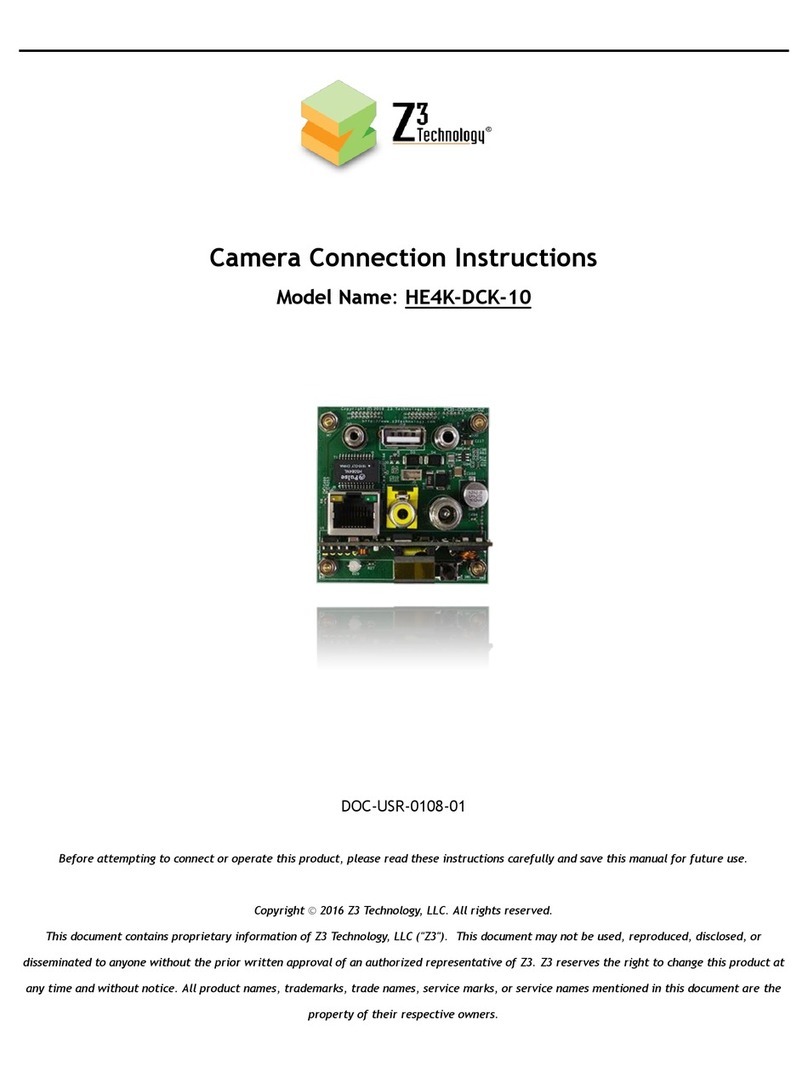Description:
The DFCS Redundant Fast Ethernet manageable media
converters are members of the modular DFCS product
family. The following models are described:
- 100Tx-2Fx: 100 ase-Tx UTP to dual 100 ase-Fx dual fiber
- 100Tx-2Tx: 100 ase - Tx UTP to dual 100 ase-Tx UTP
The DFCS Redundant Fast Ethernet modules are intended
for use in networks that require fiber or copper link
redundancy. During normal operations Port A is the active
primary and Port is the backup secondary. When loss of
link on Port A is detected, the module automatically switches
to transmitting on Port . With a switch over time
of less than 100 microseconds, these modules provide
the rapid response time required for ultra critical
applications. Note: After the link is switched, there will be
a 5 second delay before that link can been reestablished.
Application Examples:
Fig 1: Redundant Switch Example
In this example, redundant Switches 1 and 2 are
connected to Switch 3 via a 100Tx-2Fx converter. If
power fails in Switch 1, or if there is a loss of link in the
fiber cable, the 100Tx-2Fx converter switches to
transmitting on port and routes data flow to Switch 2.
Fig 2: Redundant Fi er to Customer
In this example, data flow from a core switch at the
Central Office is converted from UTP to redundant
fiber, and converted back to UTP, where it is connected
to an edge switch at the Customer Premises. If there is
a loss of link in fiber Port A, the 100Tx-2Fx converter
switches to transmitting on fiber Port , without a service
disruption to the mission-critical customer.
Link Modes:
In order to accommodate different user needs, the
Redundant DFCSs support four different linking modes.
It is recommended keeping the Redundant DFCSs in
the factory default Link Segment (LS) setting.
Fig 3: Link Segment Mode
In Link Segment (LS), sometimes referred to as the
Normal mode, a port transmits a Link signal
independently of any received Link at any other port.
For example, the UTP transmits a Link regardless of
the fiber receiving a Link [Fig 2(a) & (b)]. Figure 2(a)
shows the state when all links are functioning correctly.
Port A LEDs indicate link and activity, while the Port
LEDs blink at one Hertz to indicate they are not active,
but are in Standby. Figure 2(b) shows that when the
fiber link to Port A is broken, Port becomes active.
Page 1 Page 2 Page 3 Page 4
In Link Propagate (LP), sometimes referred to as Link
Loss Carry Forward, a port transmits a Link signal
only when receiving a Link at its other port. For
example, the UTP transmits a Link only when receiving
a Link at the fiber port (Not Shown).
In Remote Fault Detection (RFD), the UTP port
transmits a Link signal only when receiving a Link at
the fiber port. The fiber port transmits a Link only
when receiving Link signals both at the fiber port and
the UTP port. As a result, fiber faults (no Link received
at the fiber) are looped-back and can be reported to the
networks core (Not Shown).
In Symmetrical Fault Detection (SFD), the UTP port
transmits a Link signal only when receiving a Link at
the fiber port. The fiber port transmits a Link only when
receiving Link signal both at the fiber port and the UTP
port. As a result, fiber faults (no Link received at the fiber)
are looped back and can be reported to the network core. In
addition, connecting two back-to-back converters which are
both set to SFD facilitates dual-loop-back where fiber faults
are reported to both ends of the network (Not Shown).
Board Mounted Dip-Switch Settings:
Fig 4: Board Mounted Dip-Switches
LS/LP Link Segment/Propagate Dip-Switch:
This dip-switch controls Link Propagation (LP, sometimes
referred to as LLC--Link Loss Carry Forward) or Link Segment
(LS). In the ON position, LP mode is enabled. When in the
OFF position (factory default), LS mode is enabled.
Note that for LS mode, LP, RFD and SFD,
dip-switches must e in the Left position (factory
setting).
Note that setting more than one of the mode switches
(LP, RFD or SFD) to the Right position on the
same module is an illegal mode that will result in
unpredicta le ehavior.
RFD Remote Fault Detection:
When in the RFD position, the Remote Fault Detection
(RFD) mode is enabled.
Connecting two converters with oth set to RFD
mode is illegal and will cause a deadly em race
lockup.
SFD Symmetrical Fault Detection:
When in the SFD position, the Symmetrical Fault
Detection (SFD) mode is enabled. Note that for the DFCS
Redundant Fast Ethernet modules when loss of Link
occurs between two modules, both redundant connections
must have a loss of incoming Link signal in order for this
to occur.
AN/MAN UTP Auto/Manual Switch:
Setting this dip-switch to Auto (factory setting) enables the
UTP Port C to determine the mode automatically. This feature
allows connections with devices that do not auto-negotiate
properly.
FD/HD UTP Full/Half Duplex Switch:
When the Auto/Manual dip-switch is in Manual position,
the UTP Full/Half Duplex dip-switch determines the duplex
operation mode for the UTP port. When set to Full
Duplex (factory setting), the UTP port will operate in full
duplex. When set to Half Duplex the UTP port will operate
in half duplex. Adjust the half/full-duplex switch to match
the connecting device and check for link status.
RTA/NR Return to Port A Switch:
When the Return to Port A switch is in RTA position (factory
default), link reestablishment on Port A will immediately return
Page 5 Page 6
DFCS 100Tx-2Fx Dual Fiber Modules
Connector
Type Distances ST SC
MM 5km LMC3044C LMC3047C
SM 30km LMC3045C LMC3048C
SM 60km LMC3046C LMC3049C
DFCS 100Tx-2Tx Dual Fiber Modules
Connector
Type Distances RJ-45
UTP 100m LMC3043C
Dynamic Fiber Conversion System
100Tx-2Fx & 100Tx-2Tx User Manual
Order toll-free in the U.S.: Call 877-877-BBOX
(outside U.S. call 724-746-5500)
FREE technical support 24 hours a day, 7 days
a eek; Call 724-746-5500 or fax 724-746-0746
Mailing address: Black Box Corporation,
1000 Park Drive, La rence, PA 15055-1018
Web site: www.blackbox.com
CUSTOMER
SUPPORT
INFORMATION
Page 10 Page 11
LED Indicators:
LED Color Description
Power: Yellow On--Power
Port A Link: Green On--Link / link--activity
Steady link--Standby mode
Port B Link: Green On--Link / link--activity
Steady link--Standby mode
Port C Link: Green On--Link / link--activity
Port A Select: Green On--Active port / link--remote
side broken
Port B Select: Green On--Active port / link--remote
side broken
UTP Auto: Green On--Auto-Negotiation enabled
UTP FDx: Green On--Full-Duplex detected
Page 9Page 8
data transmission to Port A. When the switch is set to NR,
Port will continue to be used for transmitting data even after
link has been reestablished on Port A.
Note that modules connected together must e set to
the same mode for correct operation.
RJ45 Cross-Over Switch (not shown):
When connecting the UTP to a hub or switch, set switch to
Straight-Through (factory setting). When connecting to a
workstation, set to Cross-Over.
Mounting and Ca le Attachment:
DFCS modules are hot-swappable and can be installed
into any chassis in the DFCS family.
1. Carefully slide the DFCS module into the installation
slot, aligning the module with the installation guides.
NOTE: Ensure that module is firmly seated against
the backplane.
2. Secure the module by securing the panel fastener
screw (attached to module) to chassis front.
3. Attach the UTP port of Port C via a category 5 cable
to a 100 ase-Tx Ethernet device.
4. DFCS Redundant Fast Ethernet Modules should be
deployed in pairs with Port A linked to Port A and Port
linked to Port between the two modules. If using
DFCS Redundant Fast Ethernet Modules with redundant
Fx or Fx SF ports, attach Port A fiber ports and Port
fiber ports of the two modules via an appropriate
multimode or single-mode fiber cable. The DFCS
transmit (Tx) must attach to the receive side on
other device; the receive (Rx) must attach to the
transmit. If using DFCS Redundant Fast Ethernet
Modules with redundant Tx ports, attach the UTP
ports of the two modules Port A via a category 5
cable and UTP ports of the two modules Port via
a category 5 cable.
Page 12Page 7 040-L3043-001A 12/03
TRADEMARKS
All applied-for and registered trademarks are the property
of their respective owners.
FEDERAL COMMUNICATIONS COMMISSION AND
CANADIAN DEPARTMENT OF COMMUNICATIONS
RADIO FREQUENCY INTERFERENCE STATEMENTS
This equipment generates, uses, and can radiate radio
frequency energy and if not installed and used properly,
that is, in strict accordance with the manufacturers
instructions, may cause interference to radio
communication. It has been tested and found to comply
with the limits for a Class A computing device in accordance
with the specifications in subpart of Part 15 of FCC
rules, which are designed to provide reasonable protection
against such interference when the equipment is op-
erated in a commercial environment. Operation of this
equipment in a residential area is likely to be cause inter-
ference, in which case the user at his own expense will be
required to take whatever measures may be necessary to
correct the interference.
Changes or modifications not expressly approved by the
party responsible for compliance could void the users
authority to operate the equipment.
This digital apparatus does not exceed the Class A limits
for radio noise emission from digital apparatus set out in the
Radio Interference Regulation of the Canadian
Department of Communications.
Le présent appareil numérique német pas de bruits
radioélectriques dépassant les limites applicables aux
appareils numéirques de las classe A prescrites dans le
R glement sur le brouillage radioélectrique publié par le
minist re des Communications du Canada.
©Copyright 2003. Black Box Corporation. All rights reserved.
1000 Park Drive · Lawrence, PA 15055-1018
724-746-5500 · Fax 724-746-0746
NORMAS OFICIALES MEXICANAS (NOM)
ELECTRICAL SAFETY STATEMENT
1. Todas las instrucciones de seguridad y operación deberán ser leídas
antes de que el aparato eléctrico sea operado.
2. Las instrucciones de seguridad y operación deberán ser guardadas
para referencia futura.
3. Todas las advertencias en el aparato eléctrico y en sus instrucciones
de operación deben ser respetadas.
4. Todas las instrucciones de operación y uso deben ser seguidas.
. El aparato eléctrico no deberá ser usado cerca del aguapor
ejemplo, cerca de la tina de baño, lavabo, sótano mojado o cerca de
una alberca, etc.
6. El aparato eléctrico debe ser usado únicamente con carritos o
pedelstales que sean recomendados por el fabricante.
7. El aparato eléctrico debe ser montado a la pared o al techo sólo
como sea recomendado por el fabricante.
8. ServicioEl usuario no debe intentar dar servicio al equipo eléctrico
más allá a lo descrito en las instrucciones de operación. Todo otro servicio
deberá ser referido a personal de servicio calificado.
9. El aparato eléctrico debe ser situado de tal manera que su posición
no interfiera su uso. La colocación del aparato eléctrico sobre una
cama, sofá, alfombra or superficie similar puede bloquea la
ventilación, no se debe colocar en libreros o gabinetes que impidan
el flujo de aire por los orificios de ventilación.
10. El equipo eléctrico deber ser situado fuera del alcance de fuentes de
calor como radiadores, registros de calor, estufas u ostros aparatos
(incluyendo amplificadores) que producen calor.
11. El aparato eléctrico deberá ser connectado a una fuente de poder sólo
del tipo descrito en el instructivo de operación, o como se indique en el
aparato.
12. Precación debe ser tomada de tal manera que la tierra fisica y la
polarización del equipo no sea eliminada.
13. Los cables de la fuente de poder deben ser guiados de tal manera que
no sean pisados ni pellizcados por objetos colocados sobre o contra
ellos, poniendo particular atención a los contactos y receptáculos
donde salen del aparato.
14. El equipo eléctrico debe ser limpiado únicamente de acuerdo a las
recomendaciones del fabricante.
1 . En caso de existir, una antena externa deberá ser localizada lejos de
las lineas de energia.
16. El cable de corriente deberá ser desconectado del cuando el equipo
no sea usado por un largo periodo de tiempo.
17. Cuidado debe ser tomado de tal manera que objectos liquidos no
sean derramados sobre la cubierta u orificios de ventilación.
18. Servicio por personal calificado deberá ser provisto cuando:
A: El cable de poder o el contacto ha sido dañado; u
B: Objectos han caído o líquido ha sido derramado dentro del aparato;
o
C: El aparato ha sido expuesto a la lluvia; o
D: El aparato parece no operar normalmente o muestra un cambio
en su desempeño; o
E: El aparto ha sido tirado o su cubierta ha sido dañada.
SPECIFICATIONS
Model 100Tx-2Fx 100Tx-2Tx
Protocols 100Base-Fx,
100Base-Tx 100Base-Tx
Copper Connectors RJ-45 RJ-45
Fiber Connectors SC, ST -
Controls UTP X-over, LS/LP,
RFD, SFD, UTP
Auto/Man, FD/HD
UTP X-over, LS/LP,
RFD, SFD, UTP
Auto/Man, FD/HD
LED Displays Pwr, FO link,
UTP link, SEL, Auto,
FD/HD, RTA
Pwr, UTP link,
SEL, Auto,
FD/HD, RTA
Dimensions W:0.85" x D:4.5" x
H:2.8" W:0.85" x D:4.5" x
H:2.8"
Weight 8 oz. 8 oz.
Compliance UL, CE, FCC
Class A UL, CE, FCC
Class A
Tempe rature
-Operating
-Storage 0 to 50 C
-40 to 80 C 0 to 50 C
-40 to 80 C
Altitude 0-10,000 ft 0-10,000 ft
MTBF(hrs) 1,175,000 1,235,000



